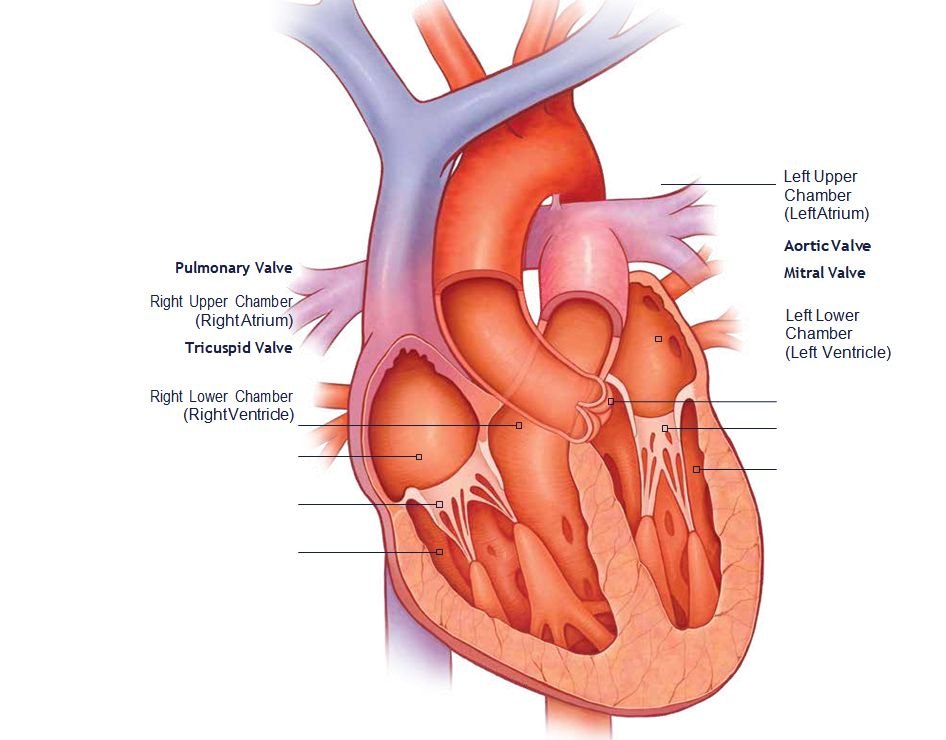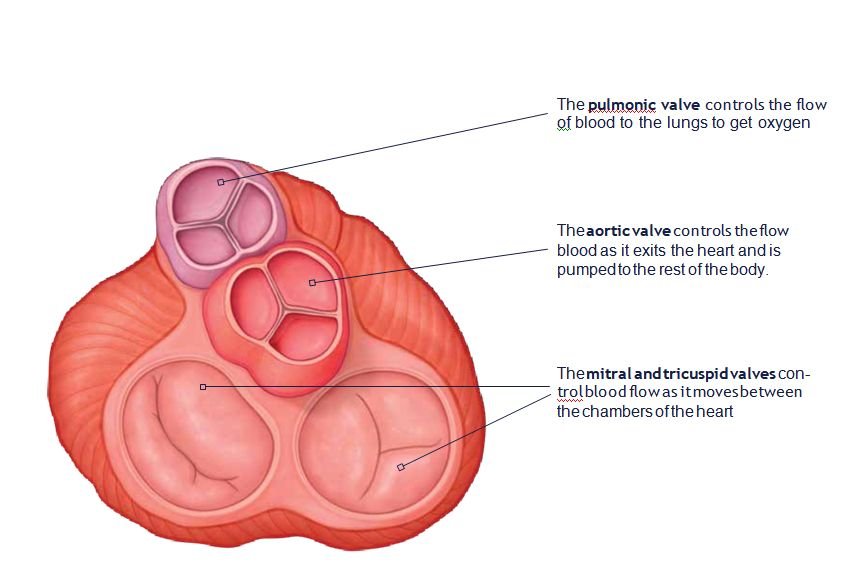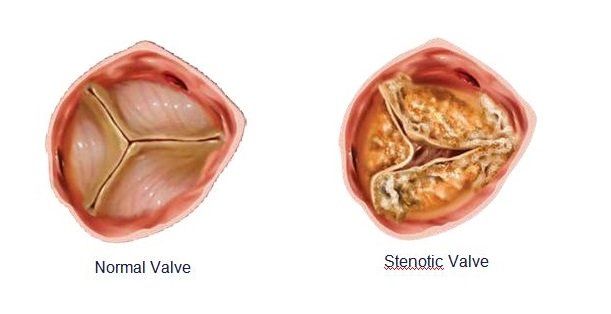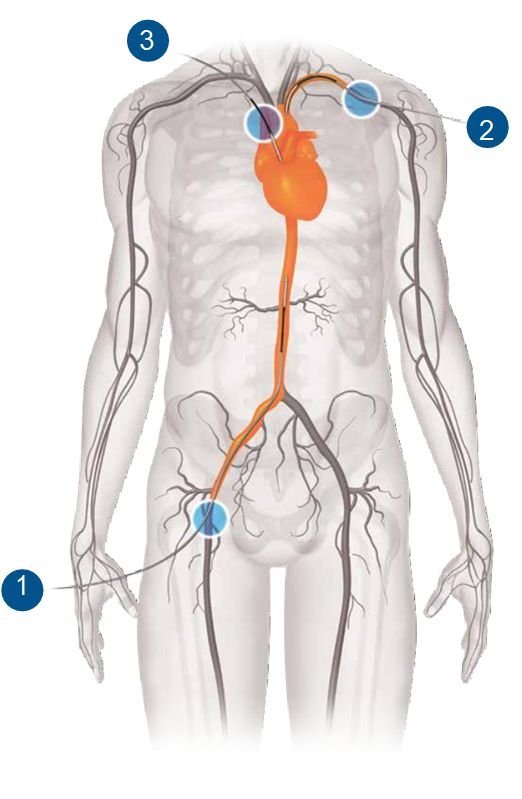Introduction:
How the Heart Works
A healthy heart beats around 100,000 times a day. The heart’s job is to supply the body with oxygen-rich blood. The heart has four chambers. Blood is pumped through the four chambers with the help of four heart valves.

What Heart Valves Do
Heart valves open when the heart pumps to allow blood to flow. They close quickly between heartbeats to make sure blood does not flow backwards. Any trouble in this normal flow will make it hard for the heart to pump the blood where it needs to go.

Severe Aortic Stenosis (Severe AS) of Your Native Valve
Your native valve is the valve you were born with. Severe AS occurs when your aortic valve does not open as it should. This makes your heart work harder to pump blood through your body. This affects your health and limits your normal daily activities.
Severe AS may be caused by the following:
- Age
- Calcium buildup that narrows the aortic valve
- Radiation therapy
- Infection of the heart
Left untreated, severe AS can lead to heart failure or even sudden death.
Failing Surgical Aortic Valve
Some people have had their own valve replaced with surgery. Surgical valves wear out over time. The surgical valve can start to fail. The Medtronic TAVR valve might be an option for these people.
Signs of Severe Aortic Stenosis
Severe AS may cause you to feel:
- Chest pain
- Faint
- Dizzy
- Tired
- Out of breath
- Irregular heartbeat

MEDICATIONS AND BALLON AORTIC VALVOTOMY (BAV) :
Your doctor may give you medications to relieve your symptoms of your disease. A procedure called BAV may also be done.BAV is not surgery but in this procedure, a balloon is placed across your valve and your valve is inflated. This will temporarily make your valve work better but its only a temporary solution and not a permanent fix of your valve. Without valve replacement, you could feel worse over time.
SURGICAL AORTIC VALVE REPLACEMENT (SAVR):
Surgical Aortic valve replacement (SAVR) is the Gold standard treatment for Severe Aortic valve stenosis. In SAVR, your diseased Aortic valve will be removed and will be replaced with a metallic or a biological valve. SAVR includes:
- Opening of your chest (either from the front or through a keyhole)
- Stopping your heart
- Connecting your heart to a heart-lung machine
- Removal of your diseased valve
- Replacing your native valve with either a metallic or biological valve
The TAVR valve is another option for treatment of severe aortic stenosis for people who are not fit for SAVR or with patients with various comorbidities. It is implanted using an artery that leads to the heart. This procedure does not require the opening of your chest. The TAVR valve is made from animal heart tissue and this tissue valve is held by a metal frame. It's designed to work like your own heart valve. There are different names of this valve like the Evolute, Evolute-Pro, MyVal just to name a few. Your doctor will choose the best valve suited for your heart.

Our heart pumps blood into all the parts of our body through some channels or routes called arteries. The TAVR valve is placed through one of these arteries that lead to the heart. Most commonly, its placed through :
- 1.The Groin artery
- The neck artery
- In between the ribs
How Does the TAVR Valve 3 Get to My Heart?
The arteries in your body are like a system of roads. They branch out from the heart. There are different “routes” that your doctor can use to get to your heart. These include:
- An artery in your leg (1)
- An artery in your neck (2)
- Space between your ribs (3)
- Or another entry point determined by your doctor
- Each route has risks. Discuss them with your doctor.

- You may be given medicines to sleep or may remain awake
- Your groin area will be anaesthetized
- The surgeon will make a cut in your artery
- A long tube (sheath) will be guided into your artery
- Your surgeon will then position the TAVR valve within your diseased valve or previously placed surgical valve (Figures 1 and 2 )
- Your TAVR Valve will begin opening and closing (Figure 3) and your surgeon will confirm the position of the valve with X-ray
- The thin flexible tube will be removed, skin cut will be closed and operation will be complete.

- Usual recovery is within 2 weeks following TAVR
- Most of the light activities can be performed
- However, as the TAVR patients are usually old, assistance may be required for a few weeks before resuming full recovery
- Few tablets, including a blood thinner tablet, is usually continued
- Can drive, swim and walk around with 8 weeks of TAVR valve
- As there is not cut , the usual experience is great following a TAVR
Very few patients may experience :
- Bleeding
- Rupture of an artery
- Need for a pacemaker implant
- Brain stroke




